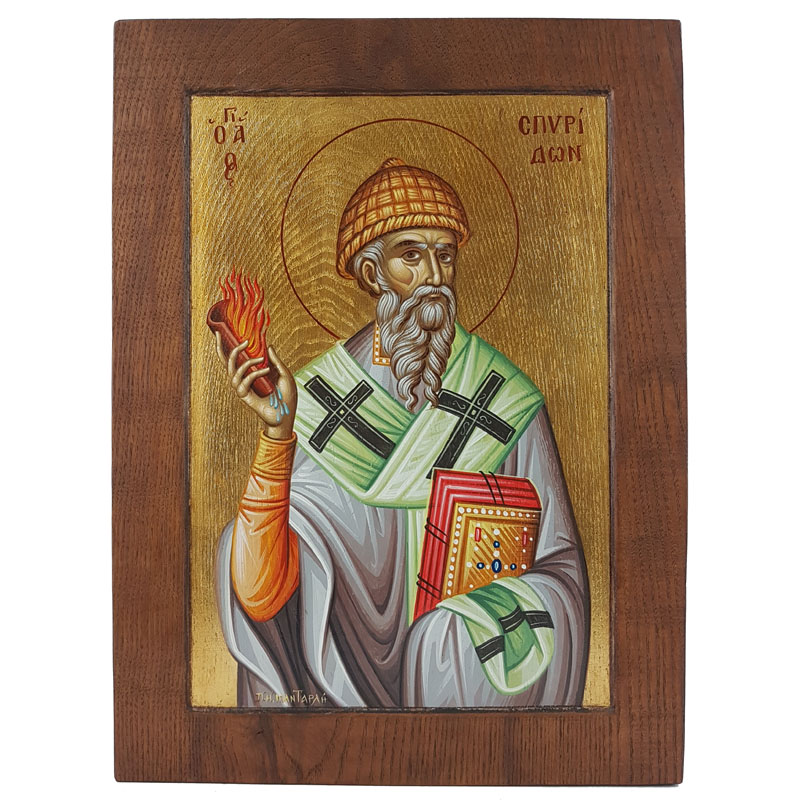Saint Spyridon was born in 270 AD. in the now occupied village of Assia (Askia) in Cyprus (and not in Trimythunda – today’s Tremetousia – as many write) from a family of shepherds, which was somewhat wealthy. Although he was educated enough, he did not change his profession. He too continued to be a shepherd.
As a character, the Saint was simple, good, full of love for his neighbor. On Sundays and holidays, he often took the shepherds and led them to the holy temples, and then explained to them the gospel or apostolic passage.
God blessed him to often become a patron of widows and orphans.
He married a pious wife and had a daughter, Irene. Soon, however, his wife died. In order to heal his wound, Spyridon devoted himself even more to the teaching of the divine word.
After much pressure, he was ordained a priest. And indeed, he was a true priest of the Gospel, just as Uncle Paul wants him to be: “Unobtrusive, sober, sober, beautiful, hospitable, teaching, having children in subjection with all modesty” (1 Timothy 3:2-7). That is, blameless, careful, restrained, modest,
welcoming, instructive, and having children who submit with all modesty. So also Spyridon, he was so correct as a priest that when the bishopric of Trimythoundos in Cyprus became a widow, the people and the clergy elected him bishop by uproar.
From this position, Spyridon advanced so far in virtue that God claimed him to perform many miracles.
Let us note here that Saint Spyridon, with the authority of his holy and moral life, at the First Ecumenical Council, which took place in Nicaea in Bithynia (Asia Minor) and in which he participated, defeated the Arians and emerged from the brilliant defenders of the Orthodox faith.In fact, according to tradition, after speaking for a while, he then made the sign of the Cross and with his left hand, which was holding a tile, in the form of the Holy Trinity said: “In the name of the Father” and made it appear upwards from the tile fire, by which it had been baked. And when he said: “And of the Son”, water flowed down, through which the soil of the tile was fermented. And when he added: “And of the Holy Spirit” he showed in his handful only the soil that remained. Saint Spyridon fell asleep on December 12, 350 AD.In 648 AD Cyprus was facing major raids by the Saracens and the relic was taken to Constantinople by Emperor Justinian. It was placed in the Church of the Holy Apostles together with the relic of Augusta Theodora. It remained the queen of the cities until the priest Grigorios Polyeuktos a few days before the fall took the two relics and transported them through Serbia, Thrace and Macedonia to Paramythia in Epirus.For three years he wandered from place to place until he reached Corfu. All this time he had placed the remains in sacks of straw and anyone who asked him told them that they were food for his livestock. In 1456 AD he arrived in Corfu because he believed that the remains would be insured. The Ionian Islands at that time were under the authority of the Venetians. Priest Grigorios Polyektos found a fellow citizen of the refugee, priest Georgios Kalochairetis, and bequeathed him the relic of the Saint.It is celebrated on December 12 of each year.
Absolute
Ἦhos a’. Of the sealed stone.
At the Synod of the first, you appeared mighty and miraculous theobearer, our Father Spyridon; through the dead you spoke in the tomb, and then you changed into gold; and in the dream you gave your holy prayers, Angels were concelebrating in your Priesthood. Glory to Christ who glorified you; glory to him who crowned you; glory to him who works for you, all healers.
